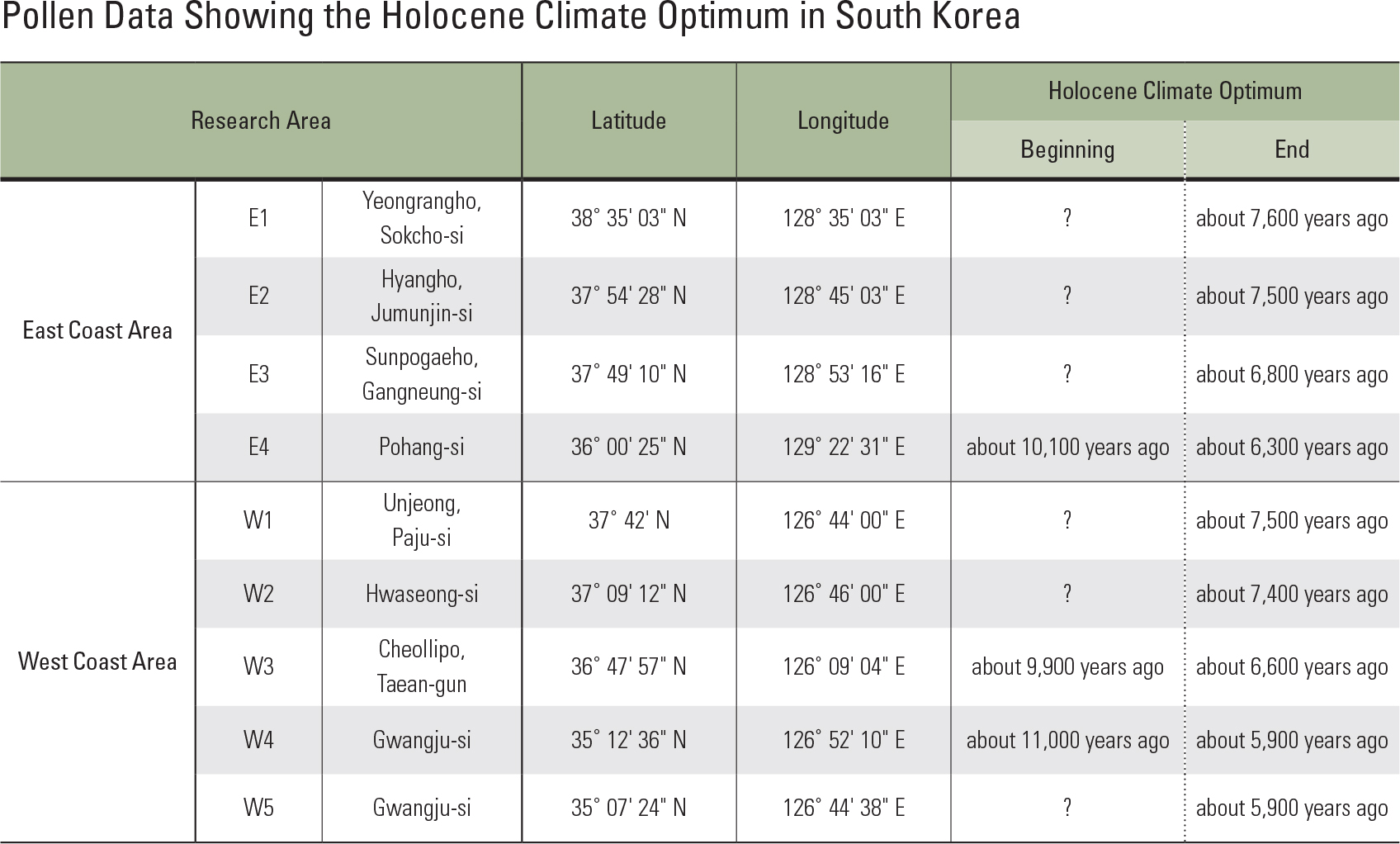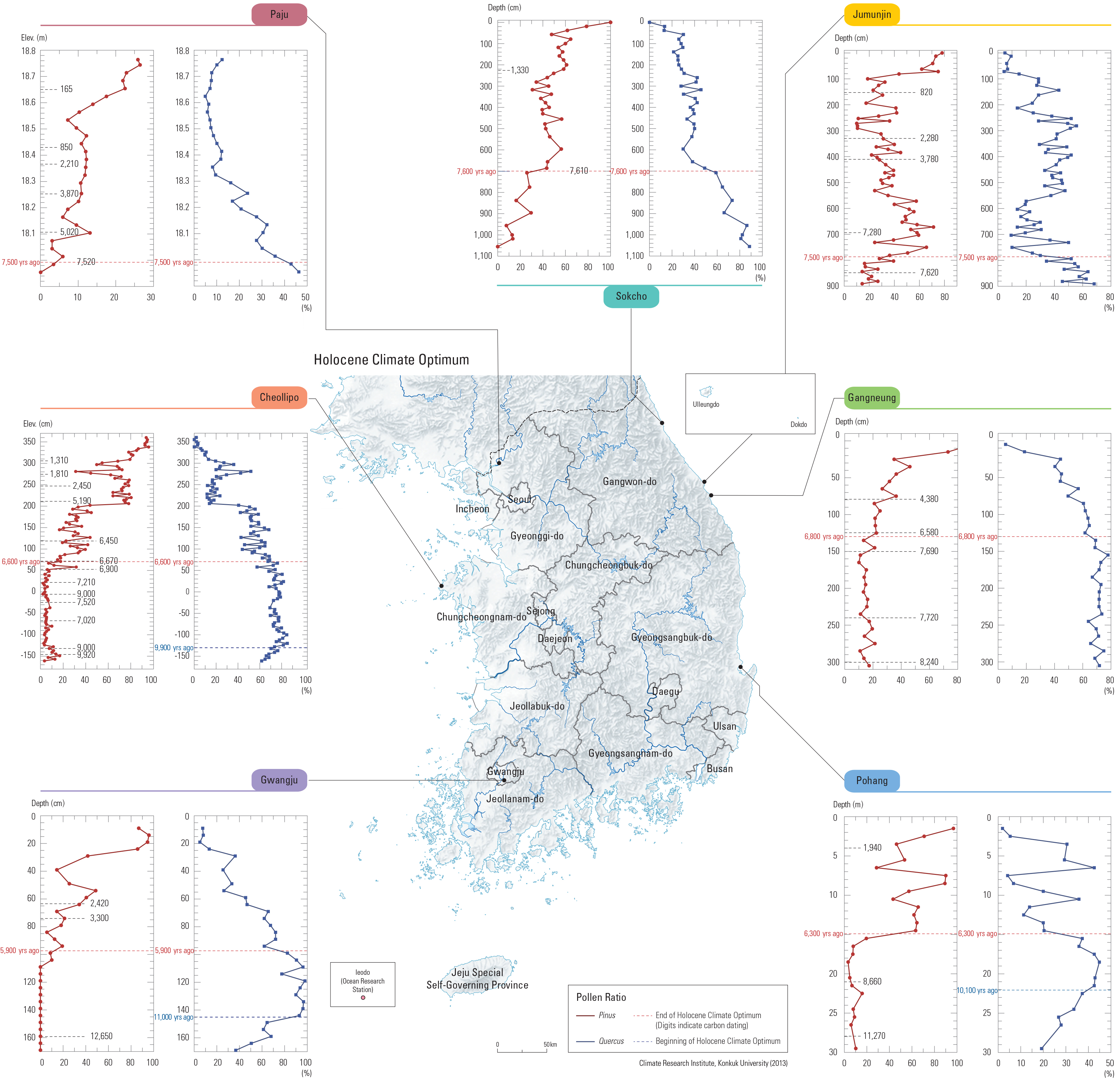English II
Pine trees (Pinus spp.) and Oak trees (Quercus spp.) are the most commonly found trees in the Korean peninsula. The decline of the population of these species are closely related to climate change. Representative deciduous broadleaf tree of Korea, Quercus spp. prefers warm and humid climate. Moreover, the species displays endur- ability in sunlight deficient environment, slow growth, and good adaptation under stable climate without disturbances. Therefore, under warm and stable climate environment, relative ratio and population of Quercus spp. among total plant spe- cies are expected to increase. On the contrary, dry and unstable climate conditions become favorable for Pinus spp..Recently, Pinus pollen has been increasing while that of Quercus spp. has been decreasing, which signifies climate cooling. In addition, the period of a decrease in the ratio of Quercus spp. and an increase in that of Pinus spp. is considered as the end of Holocene Climate Optimum (the mildest climate in the past 10,000 years). Such periods of changes in vegetation fall under from the past 7,500 to 5,900 years, showing spatial variation. In both east and west coast, the end of optimal climate of the Holocene period appears in later years from high latitudes to low latitudes.
page_2 |

